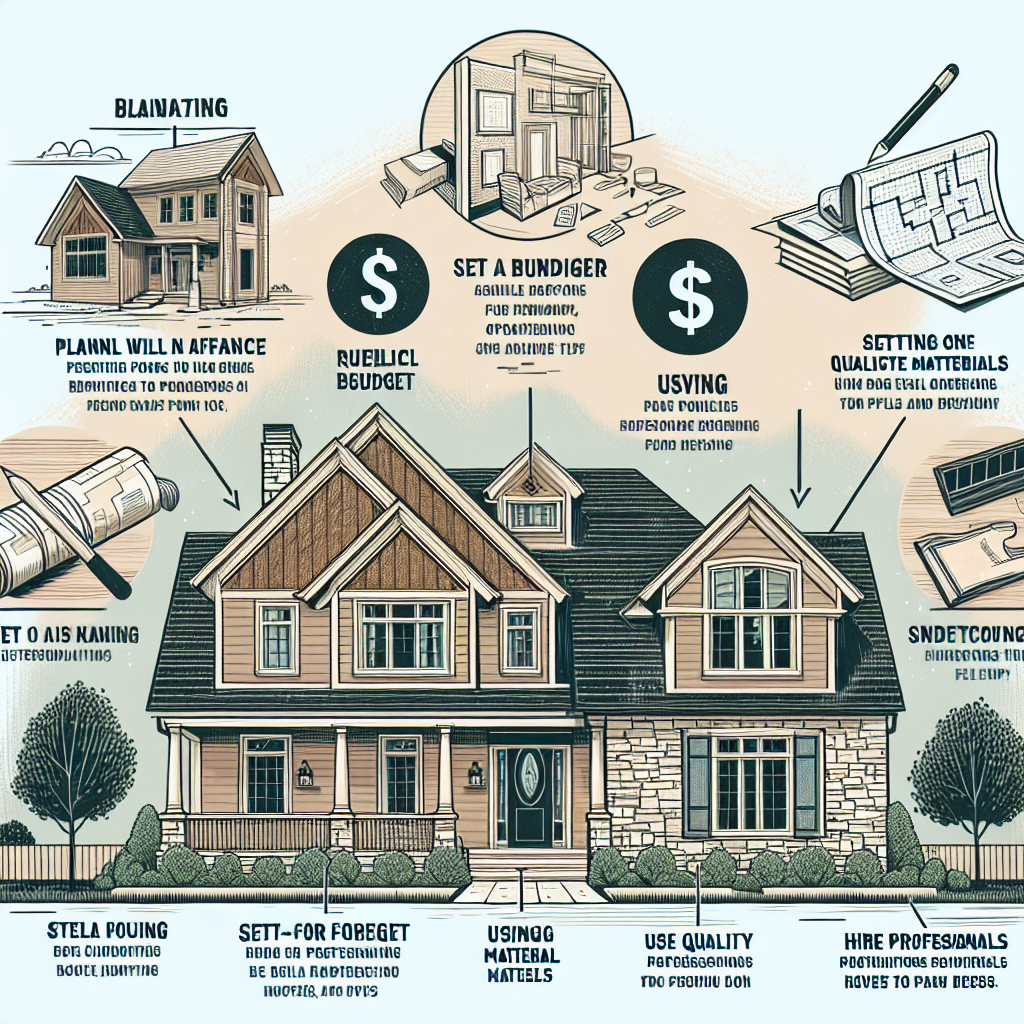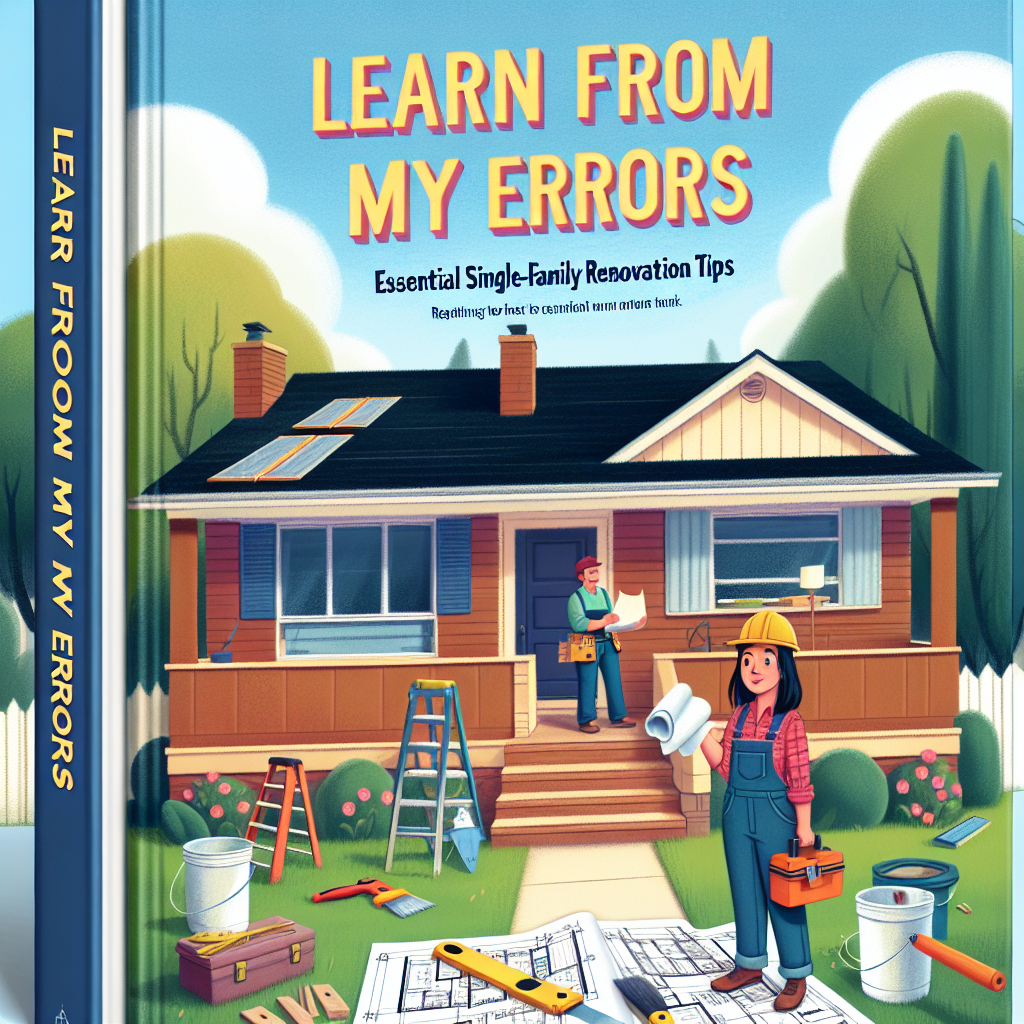-
Table of Contents
- Learn from My Errors: Essential Single-Family Renovation Tips
- Planning and Budgeting
- Set a Realistic Budget
- Detailed Planning
- Choosing the Right Contractors
- Do Your Research
- Clear Communication
- Material Selection
- Quality Over Quantity
- Sourcing Materials
- Managing the Renovation Process
- Stay Organized
- Monitor Progress
- Common Pitfalls to Avoid
- Underestimating Time and Cost
- Ignoring Structural Issues
- Case Studies
- Case Study 1: The Importance of a Detailed Plan
- Case Study 2: Choosing the Right Contractor
- Conclusion
Learn from My Errors: Essential Single-Family Renovation Tips

Renovating a single-family home can be an exciting yet daunting task. Whether you’re a first-time homeowner or a seasoned renovator, the process is fraught with potential pitfalls. Having gone through several renovation projects myself, I’ve made my fair share of mistakes. This article aims to share those lessons and provide essential tips to help you avoid common errors and achieve a successful renovation.
Planning and Budgeting
Set a Realistic Budget
One of the most critical aspects of any renovation project is setting a realistic budget. Many homeowners underestimate the costs involved, leading to financial strain and incomplete projects. According to a survey by HomeAdvisor, the average cost of a home renovation in the U.S. is around $46,000, but this can vary widely depending on the scope of the project.
- Include a contingency fund: Allocate at least 10-20% of your budget for unexpected expenses.
- Get multiple quotes: Obtain estimates from several contractors to get a sense of the market rate.
- Prioritize needs over wants: Focus on essential repairs and upgrades before splurging on luxury items.
Detailed Planning
Failing to plan is planning to fail. A detailed plan will serve as your roadmap throughout the renovation process. This includes everything from the design and materials to the timeline and labor.
- Create a timeline: Outline each phase of the project and set realistic deadlines.
- Design considerations: Work with an architect or designer to create detailed plans and 3D renderings.
- Permits and regulations: Ensure you have all the necessary permits and are compliant with local building codes.
Choosing the Right Contractors
Do Your Research
Choosing the right contractor can make or break your renovation project. A good contractor will not only execute your vision but also provide valuable insights and suggestions.
- Check credentials: Verify licenses, insurance, and certifications.
- Read reviews: Look for reviews and testimonials from previous clients.
- Ask for references: Speak to past clients to gauge their satisfaction with the contractor’s work.
Clear Communication
Effective communication with your contractor is crucial for a smooth renovation process. Misunderstandings can lead to delays, cost overruns, and subpar work.
- Set expectations: Clearly outline your expectations, including timelines, budget, and quality of work.
- Regular updates: Schedule regular meetings to discuss progress and address any issues.
- Document everything: Keep a written record of all communications, agreements, and changes.
Material Selection
Quality Over Quantity
When it comes to materials, quality should always take precedence over quantity. Cheap materials may save you money upfront but can lead to costly repairs and replacements down the line.
- Durability: Choose materials that are durable and can withstand wear and tear.
- Maintenance: Opt for materials that require minimal maintenance.
- Aesthetics: Ensure the materials align with your design vision and enhance the overall look of your home.
Sourcing Materials
Sourcing the right materials can be a time-consuming process, but it’s worth the effort. Shopping around and comparing prices can help you find the best deals without compromising on quality.
- Local suppliers: Support local businesses and reduce shipping costs by sourcing materials locally.
- Bulk purchases: Buying in bulk can often result in significant discounts.
- Reclaimed materials: Consider using reclaimed or recycled materials for a unique and eco-friendly touch.
Managing the Renovation Process
Stay Organized
Keeping track of all the moving parts in a renovation project can be challenging. Staying organized will help you manage the process more efficiently and reduce stress.
- Project management tools: Use tools like Trello or Asana to track tasks and deadlines.
- Documentation: Keep all receipts, contracts, and permits in a dedicated folder.
- Checklists: Create checklists for each phase of the project to ensure nothing is overlooked.
Monitor Progress
Regularly monitoring the progress of your renovation is essential to ensure everything is on track. This will help you identify and address any issues before they escalate.
- Site visits: Make frequent visits to the site to inspect the work and discuss any concerns with the contractor.
- Progress reports: Request regular progress reports from your contractor.
- Quality checks: Conduct quality checks at each stage of the project to ensure the work meets your standards.
Common Pitfalls to Avoid
Underestimating Time and Cost
One of the most common mistakes homeowners make is underestimating the time and cost involved in a renovation project. According to a study by the National Association of Home Builders, nearly 30% of homeowners exceed their renovation budget.
- Realistic timelines: Set realistic timelines and be prepared for delays.
- Accurate estimates: Get detailed estimates from contractors and factor in potential cost overruns.
- Contingency plans: Have a contingency plan in place for unexpected issues.
Ignoring Structural Issues
Cosmetic upgrades are important, but ignoring structural issues can lead to serious problems down the line. Addressing these issues early on will save you time and money in the long run.
- Foundation: Ensure the foundation is stable and free of cracks.
- Roofing: Check for leaks and damage to the roof.
- Plumbing and electrical: Update outdated plumbing and electrical systems to meet current safety standards.
Case Studies
Case Study 1: The Importance of a Detailed Plan
John and Sarah decided to renovate their 1950s bungalow. They had a vision but lacked a detailed plan. As a result, they faced numerous delays and cost overruns. By the time they completed the project, they had spent 30% more than their initial budget. The lesson here is clear: a detailed plan is essential for a successful renovation.
Case Study 2: Choosing the Right Contractor
Emily hired a contractor based on a friend’s recommendation without doing her own research. Unfortunately, the contractor was unreliable and did subpar work. Emily had to hire another contractor to fix the mistakes, costing her additional time and money. This case underscores the importance of thoroughly vetting contractors before hiring them.
Conclusion
Renovating a single-family home is a significant undertaking that requires careful planning, budgeting, and execution. By learning from my errors and following these essential tips, you can avoid common pitfalls and achieve a successful renovation. Remember to set a realistic budget, choose the right contractors, prioritize quality materials, stay organized, and monitor progress regularly. With these strategies in place, you’ll be well on your way to creating your dream home.
In summary, the key takeaways from this article are:
- Set a realistic budget and include a contingency fund.
- Create a detailed plan and timeline.
- Thoroughly vet contractors and maintain clear communication.
- Prioritize quality materials and source them wisely.
- Stay organized and monitor progress regularly.
- Avoid common pitfalls such as underestimating time and cost and ignoring structural issues.
By following these tips, you’ll be better equipped to navigate the complexities of a single-family home renovation and achieve a successful outcome.








